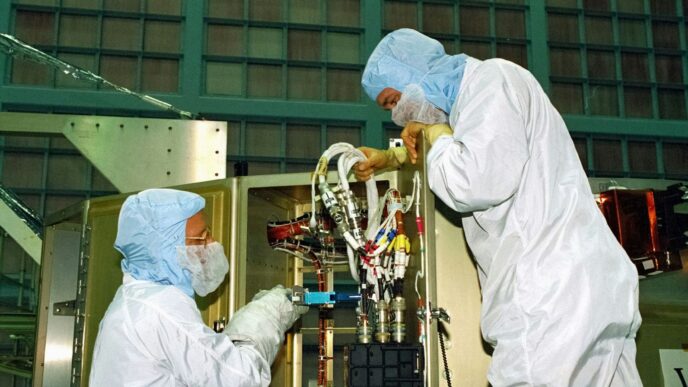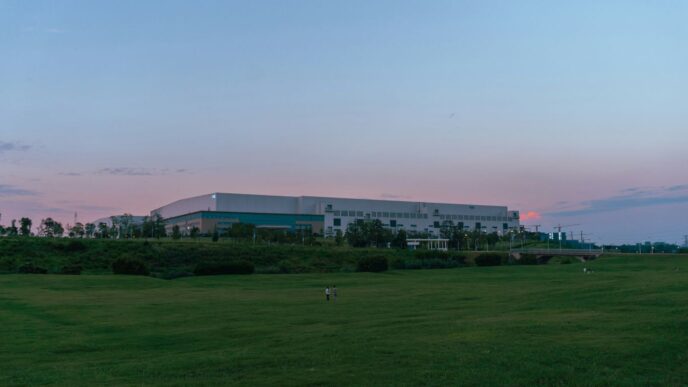Spacenews Magazine’s Editorial Influence on Space Policy

SpaceNews Magazine has built a reputation for shaping space policy by focusing not just on rockets or fancy engineering, but on the tricky decisions happening in government and industry boards. Sometimes, it feels like policymakers are waiting to see SpaceNews’s take before making their next move. Let’s break down how their reporting makes waves across the space industry.
Shaping Legislative Debates in the Space Sector
Whenever Congress, ESA, or another government body proposes new space laws, SpaceNews doesn’t just report the press release—they unpack the political mess behind the headlines. Their articles often explain:
- Who is pushing which bill and why.
- Which companies or agencies stand to win or lose.
- What amendments nobody is talking about, but probably should be.
Here’s a quick look at topics they covered extensively last year:
| Major Debate Topic | Main Stakeholders | Year Highlighted |
|---|---|---|
| Commercial launch license reform | FAA, SpaceX, Blue Origin | 2024 |
| Lunar property rights legislation | NASA, ESA, private firms | 2025 |
| Spectrum allocation for satellites | FCC, OneWeb, Amazon | 2025 |
Rather than just summarizing, their insights often get quoted in committee hearings and industry statements.
Highlighting Regulatory Challenges Facing New Space Actors
Regulatory hurdles can be pretty confusing, even for those in the field. SpaceNews digs into:
- New compliance requirements for startups.
- Logistical nightmares for small launchers and satellite makers.
- Stories of companies racing against deadlines to stay in business.
A lot of smaller firms say they learned where they needed to upgrade their legal playbook—not from lawyers, but from something SpaceNews published.
Promoting International Collaboration through News Coverage
Space exploration isn’t just about one country these days. SpaceNews puts global partnerships front and center by:
- Profiling ongoing and planned joint missions (like ESA-NASA lunar tech trials).
- Breaking down international funding deals and memoranda.
- Reporting on ministerial councils, like the recent ESA meeting that set Europe’s lunar priorities.
One thing stands out: SpaceNews keeps readers focused on the bigger picture, showing how Europe, the US, and newer spacefaring nations are trying to work together (or sometimes, not).
Bottom line, SpaceNews is the magazine people keep on their desks—not just to understand today’s policy, but to anticipate where space law and rules might be headed next year.
Driving Industry Trends with In-Depth Reporting
SpaceNews Magazine really gets into the guts of what’s changing in commercial space. Their writers take on topics that other outlets only skim. You can tell they spend a lot of time on research and talking to people in the field, so it’s more than just repackaging press releases. This kind of careful reporting shapes what both insiders and outsiders think about where the industry is going.
Profiling Leaders and Startups Shaping the Space Economy
When you look at who’s really moving the needle in space, it’s not just the big companies anymore. SpaceNews does a great job spotlighting lesser-known startup founders along with heavyweight CEOs. The magazine usually covers:
- Short interviews with CEOs from rising launch providers or satellite builders
- Stories that show how startup culture and investment lessons from other tech fields mix into space
- Features on people whose backgrounds aren’t traditional for aerospace, like venture capitalists or AI specialists (AI expertise in the new space economy)
It’s become normal to find a mix of company profiles, highlighting not just American companies, but also new players from Europe, Asia, and South America.
Analyzing the Evolving Role of Private Companies
The days of space being purely government-led are over. Now, SpaceNews spends a lot of time tracking how private players are influencing launch costs, mission planning, and even regulation.
Here’s a look at their regular coverage:
| Issue | Key Private Sector Trend |
|---|---|
| Jan 2025 | Commercial lunar landers ramping up |
| Mar 2025 | Consolidation among smallsat companies |
| Jun 2025 | New insurance options for satellite providers |
The articles connect the dots between new investment, mergers, and changes in how public-private partnerships work. There’s also a focus on challenges, like adapting government contracting rules for new types of businesses.
Spotlighting Technological Advancements and Innovations
Maybe the most interesting thing: SpaceNews follows all the latest in rockets, satellites, digital tools, and ground systems, but in a way that’s easy to follow even if you’re not an engineer. It goes past the hype and breaks down what’s actually new, versus what’s marketing.
Recent innovative topics include:
- Smarter propulsion systems for mini-satellites
- Direct-to-device satellite communications pushing mobile tech forward (see the evolution with new iPager launches)
- Remote sensing platforms that turn huge datasets into useful business or environmental tools
For anyone trying to keep up with what’s coming next in space technology—whether you’re investing, building, or just curious—SpaceNews offers a window into the most important changes. The coverage helps readers see what actually matters, not just what’s loudest in the news cycle.
Engaging the Space Community Through Space Minds Podcast
SpaceNews keeps its readers close and its wider audience even closer with the Space Minds Podcast. This series isn’t just about headlines; it’s about bringing real human voices into the conversation on space. Every week, hosts like David Ariosto and Mike Gruss sit down with people who are living and breathing space innovation, making what often seems distant feel personal and immediate.
Featuring Voices from NASA, ESA, and Commercial Leaders
On Space Minds, you don’t get dry lectures—you get unscripted, thoughtful talks with folks from NASA, ESA, and everyone shaping the next wave of commercial missions. What makes it work?
- Guests span from veteran astronauts to founders of tiny startups risking everything to get to orbit.
- Leaders open up about how decisions (big or small) impact their teams and the wider space community.
- Discussions feel less like interviews, more like fireside chats about the real moves behind the scenes.
Exploring Key Topics Like Satellite Defense and ISS Transitions
Space Minds picks up stories you might catch in passing and unpacks them so regular listeners don’t miss a beat. Here are just some of the issues they break down:
- The new race to secure satellites—and the risks most of us overlook.
- What’s really happening with the International Space Station now that commercial replacements are taking shape?
- Unfiltered stories about military partnerships in space—both the benefits and the landmines.
Building a Loyal Audience Across Digital Platforms
The podcast doesn’t just live on one tucked-away website. It’s everywhere:
- Fresh episodes drop every Thursday, reliably building a regular habit for listeners.
- Available on platforms like Spotify, Apple Podcasts, YouTube, plus the SpaceNews site.
- Community feels personal—listeners can sign up for reminders and never miss something they care about.
Here’s a glimpse into Space Minds’ digital reach (as of 10/10/2025):
| Platform | Monthly Listeners/Viewers |
|---|---|
| Spotify | 14,000 |
| Apple Podcasts | 10,800 |
| YouTube | 18,200 |
| SpaceNews.com | 8,700 |
It’s not a small group of insiders anymore—the show has opened doors for space conversation and made sure the discussion goes way beyond industry talk. Regulars tune in for honest, interesting debate—and walk away knowing a little more each time.
Examining the Intersection of Defense and Commercial Space
The lines between military and commercial space activity are getting really blurry in 2025. The surge in private space companies has made defense planning more complicated—but also more dynamic. SpaceNews Magazine keeps tabs on this intersection, regularly reporting how these two worlds pull together, clash, and adapt as new threats and technologies emerge.
Reporting on Military-Civilian Collaboration in Orbit
When satellites were rare, military and commercial operators barely crossed paths. Now, they’re sharing orbits, handling shared risks, and sometimes even partnering. SpaceNews covers these overlapping missions by:
- Tracking government contracts awarded to commercial launch and satellite providers.
- Examining how Space Force leans on private players like SpaceX and Terran Orbital for rapid deployment.
- Breaking down shared emergency protocols for orbital collisions or debris.
More than ever, the military relies on commercial space companies to build and run the tech it needs—right alongside private ventures. This collaboration means better surveillance, but it also comes with fresh headaches over transparency and whose assets get priority if something goes wrong.
Discussing Satellite Security in the Era of New Threats
Satellites make everything from GPS to missile tracking work. But with more satellites out there, hackers and new weapons have more targets too. SpaceNews doesn’t just cover missile launches—they dig into threats that few people think about:
| Threat Type | Example | Defense Solution |
|---|---|---|
| Cyberattacks | Hacked imagery uploads | Encrypted comms, firewalls |
| Kinetic (missiles) | Anti-satellite missiles | Defensive maneuvering, alerts |
| Electromagnetic Interference | Jammed signals | Spectrum monitoring |
- Articles spotlight how companies are building more resilient hardware and safer software.
- Features reveal a constant game of cat and mouse: Space-based assets have to keep pace with brand-new hacking methods or targeted attacks.
- Interviews dig into who checks the checkers: When so many players operate satellites, how do you build real trust?
Analyzing the Strategic Implications of Emerging Players
It’s not just the U.S., Russia, or China anymore. Smaller countries and startups jump in every year, and SpaceNews looks at how that changes strategy for everyone:
- They highlight how startups bring fresh perspectives—and make old defense setups a little nervous.
- Reports focus on tech transfer: Sometimes, the tools for broadband or remote sensing can double as surveillance or even anti-satellite tech.
- Editorials debate international rules: Should there be stricter standards on who can launch, or does that stifle innovation?
In short, SpaceNews Magazine captures the push and pull as defense priorities and commercial innovation collide in orbit. Their coverage helps the public, industry, and policymakers keep up with a world where a tiny satellite can shake up global security if someone’s not paying attention.
Amplifying the Conversation on Space Sustainability

SpaceNews Magazine has made talking about space sustainability feel urgent and real this year. There’s always something new about orbital debris, plans for responsible use of resources, or clever ideas for using satellite data.
Covering Earth Observation and Environmental Impact
Every week, stories dig into how satellites are changing what we know about Earth’s environment. Satellites now spot things in real time—like wildfires, oil spills, and even sudden changes in crop health. That means governments and companies make quicker choices. Here’s a quick summary of satellite impacts just from Q3 2025:
| Application | Example Outcome |
|---|---|
| Forest Management | Faster wildfire detection |
| Urban Growth Monitoring | Smarter city planning |
| Disaster Response | Quicker emergency dispatch |
| Pollution Tracking | Real-time industrial controls |
| Climate Change Analytics | Better long-term forecasts |
Virgin Galactic’s recent advances in commercial technology are also making more frequent launches—so keeping tabs on environmental impact is even more relevant.
Discussing Responsible Governance and In-Orbit Regulations
SpaceNews writers often drag policy into the sunlight by:
- Breaking down how new laws tackle orbital debris
- Pointing out where countries don’t agree on rules
- Explaining which agencies keep an eye on new launches
A lot of attention goes to how in-orbit servicing (like satellite repair) changes the conversation about ownership and responsibility. Lawmakers, scientists, and startup founders all get quotes, making the reporting feel grounded and current.
Encouraging Industry-Wide Debate on Sustainable Growth
It’s not just about preaching—SpaceNews turns the mic over to experts, skeptics, and up-and-coming CEOs. Here’s what gets covered in their big sustainability round-ups:
- What “sustainable growth” actually means for big and small space companies.
- Lessons from failed missions—what went wrong, who learns, and how.
- Arguments for and against strict regulations on mega-constellations.
Honestly, it feels like debates get real and not just ‘talking points’—sometimes there’s agreement, often not, but you get the sense it pushes the whole industry to think harder about what comes next.
Conclusion
So, looking at how SpaceNews Magazine is doing things in 2025, it’s pretty clear they’re not just reporting the news—they’re actually helping shape what people care about in space. With their weekly Space Minds podcast, they’re bringing in voices from all over the industry, from scientists to business leaders, and making those conversations easy for anyone to follow. The mix of interviews, news, and listener engagement means you don’t have to be a rocket scientist to keep up. Plus, they’re everywhere—YouTube, Spotify, Apple, and their own site—so it’s hard to miss what’s happening. In a year where space is getting more crowded and complicated, SpaceNews is making sure the big questions and debates don’t get lost. If you want to know what’s next for space, or just want to hear what the people building the future are thinking, this is where you’ll find it. Honestly, it feels like they’re making space a little less distant for the rest of us.














